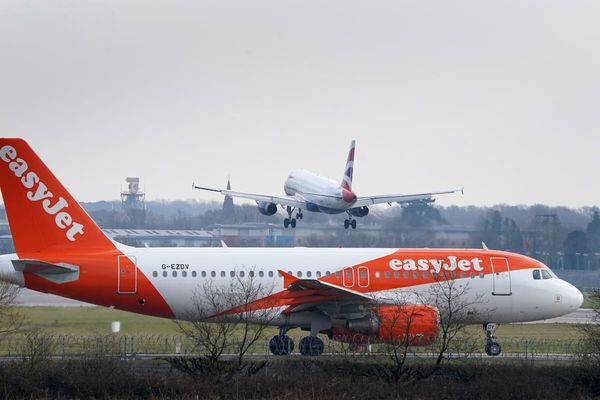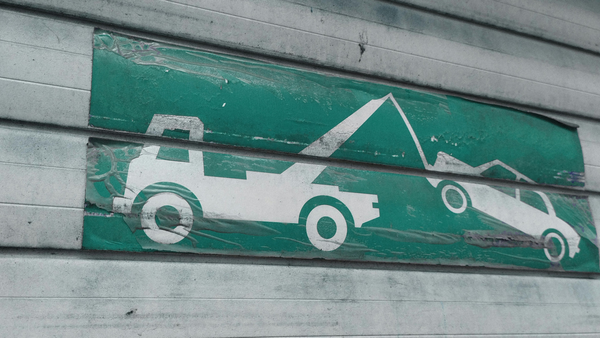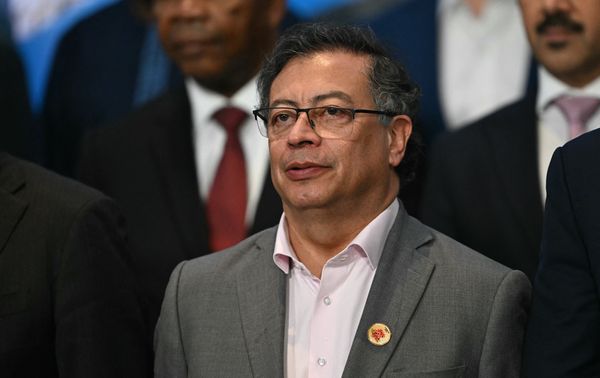ENTERING Europe’s first museum of contemporary Palestinian art, which has just opened in Edinburgh, there is a sense of calm and beauty you don’t instantly attach to Palestine.
The space, which opened to the public on Saturday, is bright, welcoming, and full of work from a range of Palestinian artists showcasing paintings, sculptures and installations.
The aim of the project is to “humanise the Palestinian people” in a time when their “dehumanisation” is only too common. The team hopes to host events, and put on commissioned exhibitions in the coming months and into 2026.
It is the first branch of an existing museum in Woodbridge, Connecticut, called the Palestine Museum US.
Curator and director Faisal Saleh, a US Palestinian entrepreneur based in Connecticut said the team had originally tried to open the museum in the building that previously held the Israeli embassy in Dublin following Israel’s announcement that it would shut down.
However, after a lot of pushback from the building’s owners, the team decided on Edinburgh as a location given the city’s festival culture. This was in March, and in April, he came to Scotland to set the museum up and establish a team of volunteers to run it.
Yasmina Ferrigan (below) is part of that team, and she was the one who greeted me at the door.
Born and raised in South Africa during the apartheid era with Scottish and Malaysian-Egyptian roots, Ferrigan is the manager at the social enterprise Hadeel — a social enterprise that sells Palestinian handcrafts and food items from fair trade producer groups — on George Street.
She shows me around and introduces me to Leena Nammari, an artist born in Palestine who shares the story behind her interactive piece inspired by a Jenga tower.
“It’s about understanding the weight of your words — realizing that words do matter, even though we don’t always think about them in the moment,” Nammari shared.
Nammari created a Jenga tower made up of a mixture of batons made of olive wood from Bethlehem and bronze, and each one of these a curse after an argument with her brother ended in giggles.
“Sometimes, when you reflect on what you’ve said, you realize just how much meaning those words carry.
“There’s also a bit of fun in it — it shows that Palestinians have a strong sense of dark humour. Even in our tragedies, there’s still humour, because we’re human, after all.”
Speaking about the museum, she said: “It’s humanising Palestinians. It's like 'we are one of you'. We have our tragedies and we have our have beauty. And a lot of people only see the tragedy of the Palestinians. We have always been the victim.
“And this way you're actually showing them we have art, we have culture, and we have music. We have traditions. We have all kinds of different things.
“It’s just to take us away from that kind of spectacle in being that tragic figure all the time.
"We do have everything else that you have, and you have to see that, and you have to experience that because, otherwise, it’s just something on a TV. It’s something on your screen on your phone.
"I think this is what this [the museum] is going to do, and hopefully it will being the message across".
As visitors walk round, they can view work by artist Samia Halaby, who won a special mention at last year’s Venice Biennale, and by 81-year-old Nabil Anani, who is regarded as a key founder of the contemporary Palestinian art movement.
Sana Farah Bishara, a Nazareth-born sculptor based in Haifa, also features, as well as recent works created in Gaza by Mohammed Alhaj and Maisara Baroud.
There is also a bronze bust sculpture of Dr Hussam Abu Safiya, who has been detained by the Israeli army since December.
Then, Ferrigan showed me drawings by children in Gaza. She shared that visitors often have an emotional reaction to these pieces in particular, but none so like the man who put the pictures on the wall.
From Gaza himself, he helped set up the space and when putting the children’s drawings on the wall, he realised his brother-in-law had been killed just the week prior at the school depicted in one of the drawings.
“We can all relate to this by knowing someone who has been directly impacted, or whose family has been directly impacted,” Ferrigan said.
“The trauma of that experience affects not just the individual, but it resonates deeply with everyone walking through this museum. It’s something you can’t quantify or fully explain—and that’s why having this space is so important. It provides a place where people can speak openly and freely, where they can grieve, but also celebrate the beauty of Palestinian culture.
“All you have to do is walk through the museum to see that."
She added: “There are so many mixed emotions. As you go through each room and look at each painting, it’s truly amazing and powerful. It’s phenomenal to have this space here in Edinburgh - a city connected to Lord Balfour, the author of the Balfour Declaration - and now we have the Palestinian flag flying on Dundas Street.
“It’s an honour - truly, a real honour.”
One of the volunteers told me she had been in most days since it had been opened and keeps discovering new things she hadn't seen in the art.
The Palestine Museum Scotland is an independent, not-for-profit organisation and will be run by volunteers. It is open Wednesday to Sunday, from 11am at 13a Dundas Street.







